Aluminum coiled strip is an extremely versatile raw material used in an extensive range of forming operations. These include stamping, drawing, roll forming, extrusion and more. Aluminum is the preferred material for many manufacturers thanks to its light weight, thermal conductivity, corrosion resistance, recyclability and machinability. Let’s take a look at some of the more common aluminum forming methods:
STAMPING
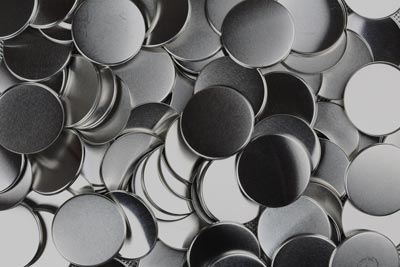 Stamping is one of the most common manufacturing processes. This process uses a press with tooling for forming the aluminum strip. There are many stamping methods on the market today. They can be categorized by the type of press, tooling, and process used for stamping parts.
Stamping is one of the most common manufacturing processes. This process uses a press with tooling for forming the aluminum strip. There are many stamping methods on the market today. They can be categorized by the type of press, tooling, and process used for stamping parts.
- Four-Slide Stamping – a four-slide stamping press is using four tools at the same time to form and bend the aluminum in multiple ways and directions, all in one step.
- Fine Blanking – is a special kind of stamping used when the parts being produced require very good flatness and a fully sheared edge.
- Progressive Die Stamping – this type of stamping feeds the strip through various different sequential “stations” and each station performs a different part of the required forming of the strip. The parts remain attached to the original strip while moving between stations and having subsequent forming done to them, until reaching the final station where the part is completed.
- Transfer Die Stamping –similar to progressive stamping, but transfer stamping presses do not leave the parts attached to the strip. They can be one or multiple dies in succession, and parts are moved by a transfer system, during the steps.
DRAWING
In simplest terms, drawing refers to using a press to force the displacement of metal through a mold or die, creating a drawn shape. Forcing the flat metal to form into the shape of the die causes cold-working to occur. This allows the shape to be maintained when removed from the die. Maintaining the shape is critical. If the amount of deformation in one step is too great, the aluminum will split or shear. For deeper or more complex shapes, multiple stages of small draws are used to gradually produce the full shape.
 DEEP DRAWING
DEEP DRAWING
In general, any metal shape in which the height of the finished part exceeds the width could be considered a deep draw. A “deep draw” is achieved by re-drawing the shape through a series of progressively deeper dies. Successful deep drawing requires extreme accuracy and careful balance of the forming load, bending forces, punch radius, wall thickness, lubrication and so many other variables.
ROLL FORMING
Roll Forming is a type of operation where aluminum strip is passed through a long series of rollers which continuously bend the strip further into the final desired shape. The rollers are precisely positioned so they can keep bending and forming the strip a little further, making only a small change from the shape exiting set of rollers before. Roll formed parts are typically “long and thin” in nature.
 EXTRUSION
EXTRUSION
Extrusion is the process of forcing an aluminum alloy mass though a specific shape die using powerful ramming forces. This causes the metal to form to the shape of the die and be pushed out in long forms onto a run-out table.
CASTING
This process is a bit different than the ones we’ve covered already. With casting, molten aluminum is poured into a mold or cast to create the component. Similar to stamping, casting can be further categorized to include:
Sand Casting – here, the mold is created from a sand mixture. It’s ideal for prototyping and short runs.
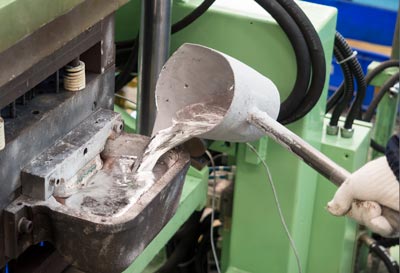 Die Casting – this method is similar to injection molding, but uses molten aluminum instead of plastics or rubbers. It’s a high pressure process that is ideal for high precision, or shorter runs of complex or detailed parts.
Die Casting – this method is similar to injection molding, but uses molten aluminum instead of plastics or rubbers. It’s a high pressure process that is ideal for high precision, or shorter runs of complex or detailed parts.
Permanent Mold Casting (aka Gravity Die Casting) – this process uses reusable metal molds, which the molten aluminum pours down into. It results in parts with strong mechanical properties, and can be used for medium-long runs.
Investment Casting (aka Wax Casting) – uses a wax model that is coated with ceramics. The wax is then melted, leaving a cavity for the molten aluminum to be injected into.
As you can see, aluminum strip is extremely versatile and used in wide range of fabrication processes. The exact method and chosen will depend on the part’s geometry, complexity, size of the run, and other factors. Similarly, the type of aluminum or aluminum alloy used will rely on the part’s required properties including strength, weight, finish and others.
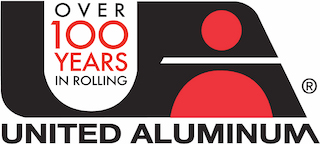
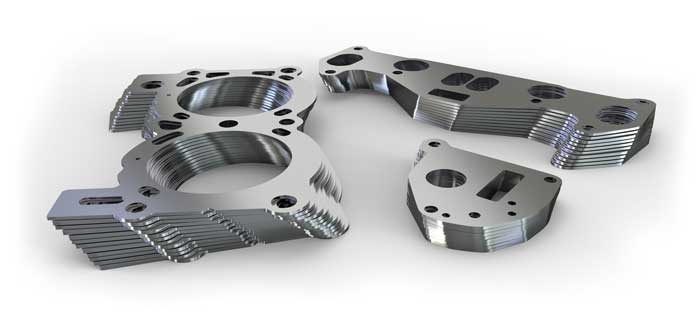
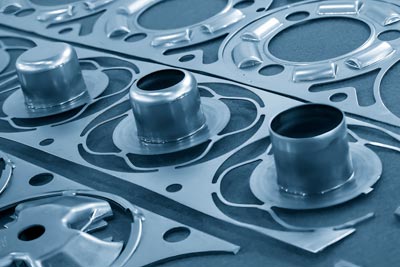 DEEP DRAWING
DEEP DRAWING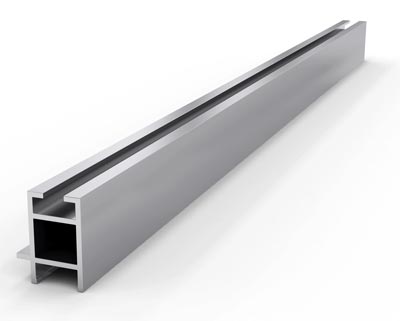 EXTRUSION
EXTRUSION